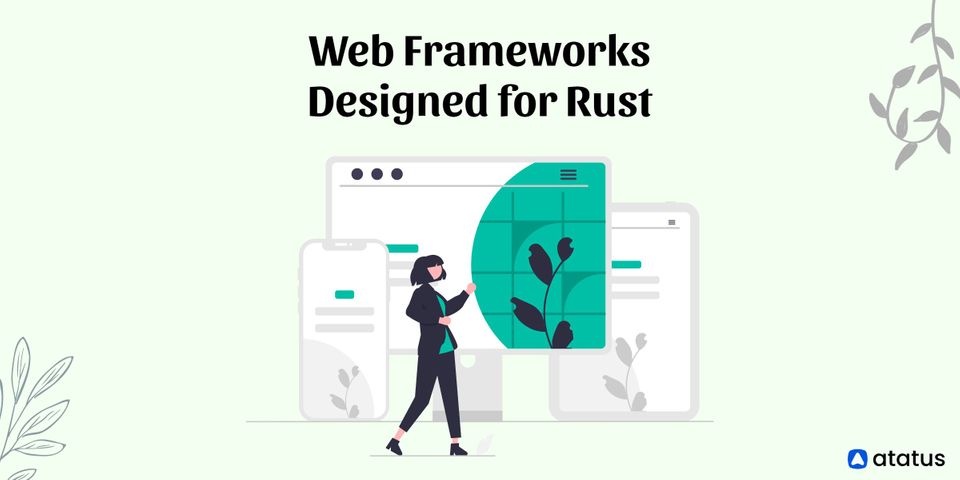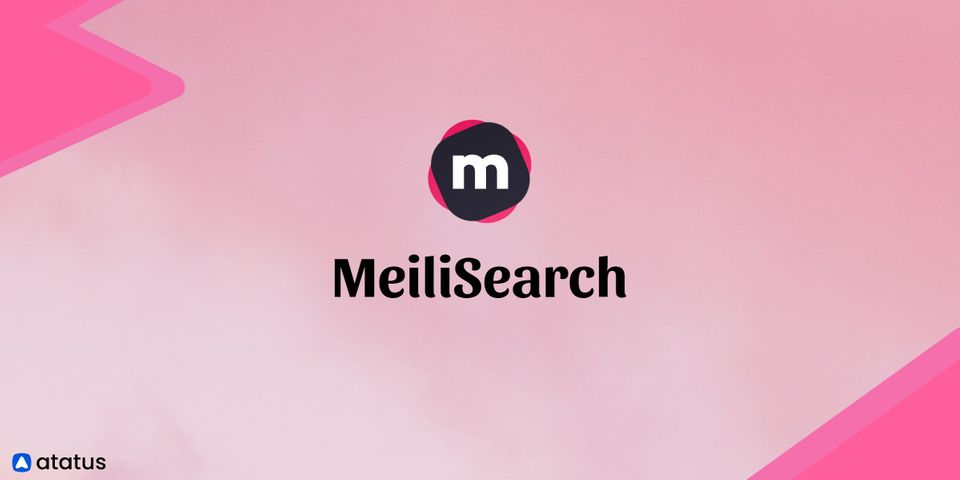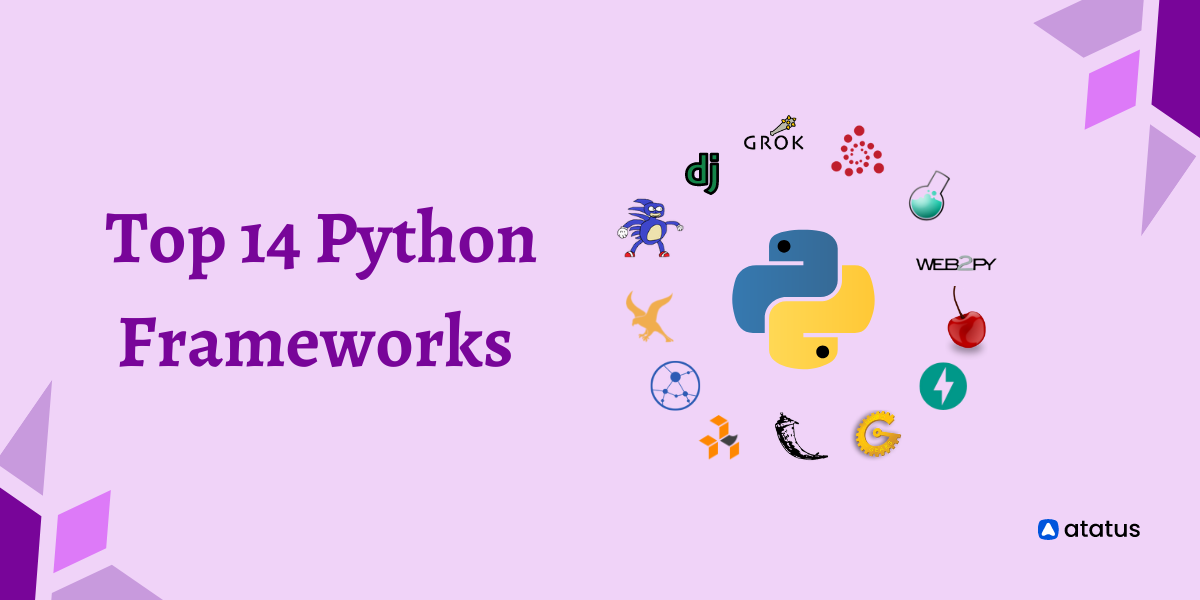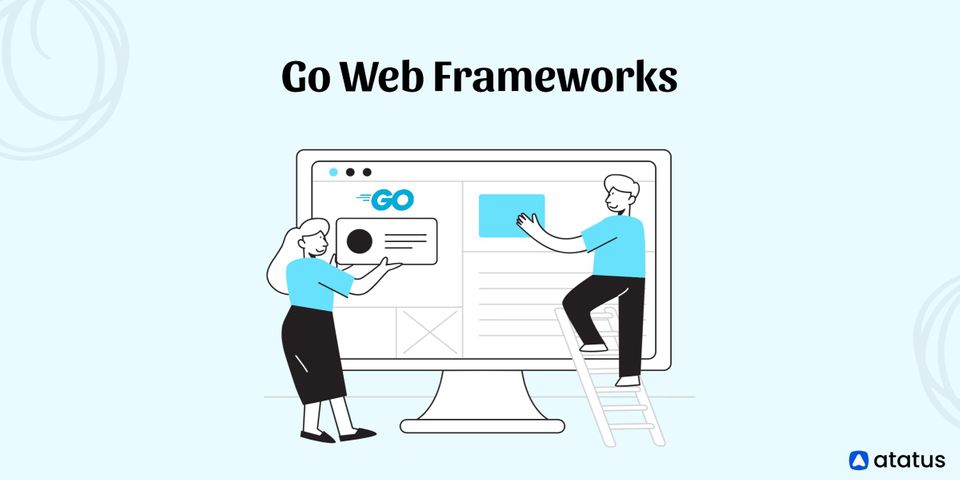Top 11 Web Frameworks Designed for Rust
Since 2016, the Stack Overflow Developer Survey has named the Rust language, also known as Rustlang, the "most loved programming language". It is one of the most highly regarded modern programming languages in the world.
The syntax is quite similar to C++, but it has extra features like memory safety that can make your life much simpler and more secure. Only about 7% of respondents to the stack overflow survey claimed to use the language, despite it having a strong reputation in the development community.
As a general-purpose language, Rust is supported by several frameworks that enable you to create almost anything that can be done in a language, including websites, games, and GUIs.
Here are the top 11 Rustlang frameworks that you need to pay close attention to.
Introduction
A web framework is a software tool that aids in the creation of web applications; it can have any size codebase, from one with a tiny amount of code for micro applications to one with a vast amount of code for enterprise applications, and anything in between.
The most complete web frameworks offer libraries that handle databases, templating, sessions, migration, and other tools to speed up the development process. Simpler frameworks place a greater emphasis on frontend management for rendering static information.
Web frameworks can offer the web services, web resources, and web APIs that development teams require to aid in the realization of their ideas.
Your development team should take into account the relative importance of the following when selecting the best web framework for your project:
- Security
- Flexibility
- Community growth
- Project size
Depending on the priorities of your project, many web frameworks can assist you in meeting your most urgent development needs. We will talk primarily about frameworks created with Rust in this article.
#1 Tauri
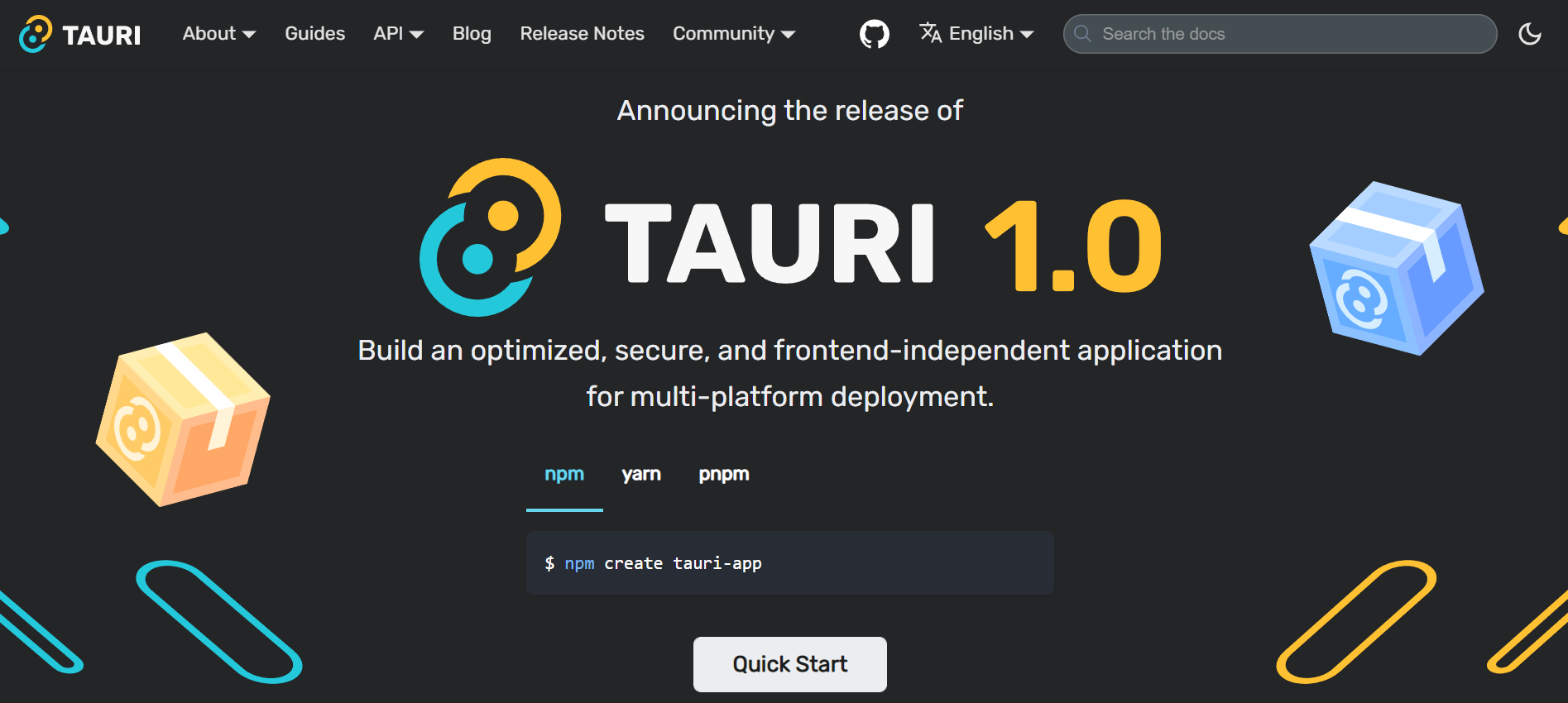
Tauri is a popular framework for creating incredibly small, lightning-quick binaries for all popular desktop operating systems. For the creation of their user interface, developers can incorporate any frontend framework that compiles to HTML, JavaScript, and CSS. The application's backend is a rust-sourced binary with an API that the frontend can use to communicate.
The Tauri team incubated and maintained WRY to create a unified interface to the system webview (and other goodies like Menu and Taskbar), leveraging WebKit on macOS, WebView2 on Windows, and WebKitGTK on Linux. Tauri apps currently use tao as a window handling library on macOS and Windows, and gtk on Linux.
Features:
- App storage
- App tray
- Core plugin system
- Desktop bundler
- GitHub action
- Native notifications
- Scoped filesystem
- Self-updater
- Sidecar
#2 Yew
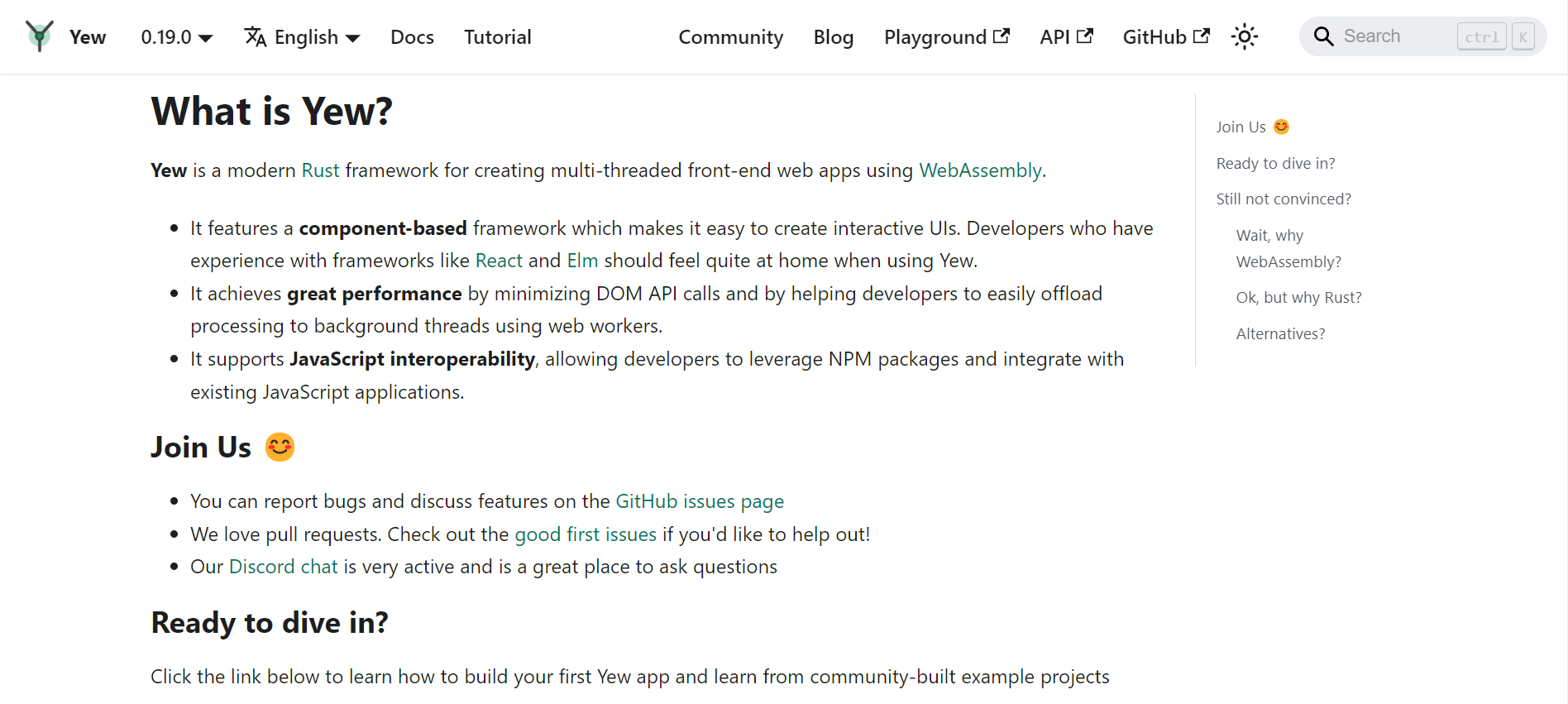
Yew is a cutting-edge Rust framework for building WebAssembly multi-threaded frontend web applications. It includes a macro for defining interactive HTML using Rust expressions. Yew should be incredibly familiar to developers who have used JSX in React.
It minimizes DOM API calls for each page render to achieve great efficiency, and it makes it simple to offload processing to background web workers. It enables developers to use NPM packages and interface with already-existing JavaScript applications by supporting JavaScript interoperability.
Features:
- Component-based framework
- Portable low-level language
- Supported in all major modern browsers
- Uses own virtual-DOM representation
#3 Rocket
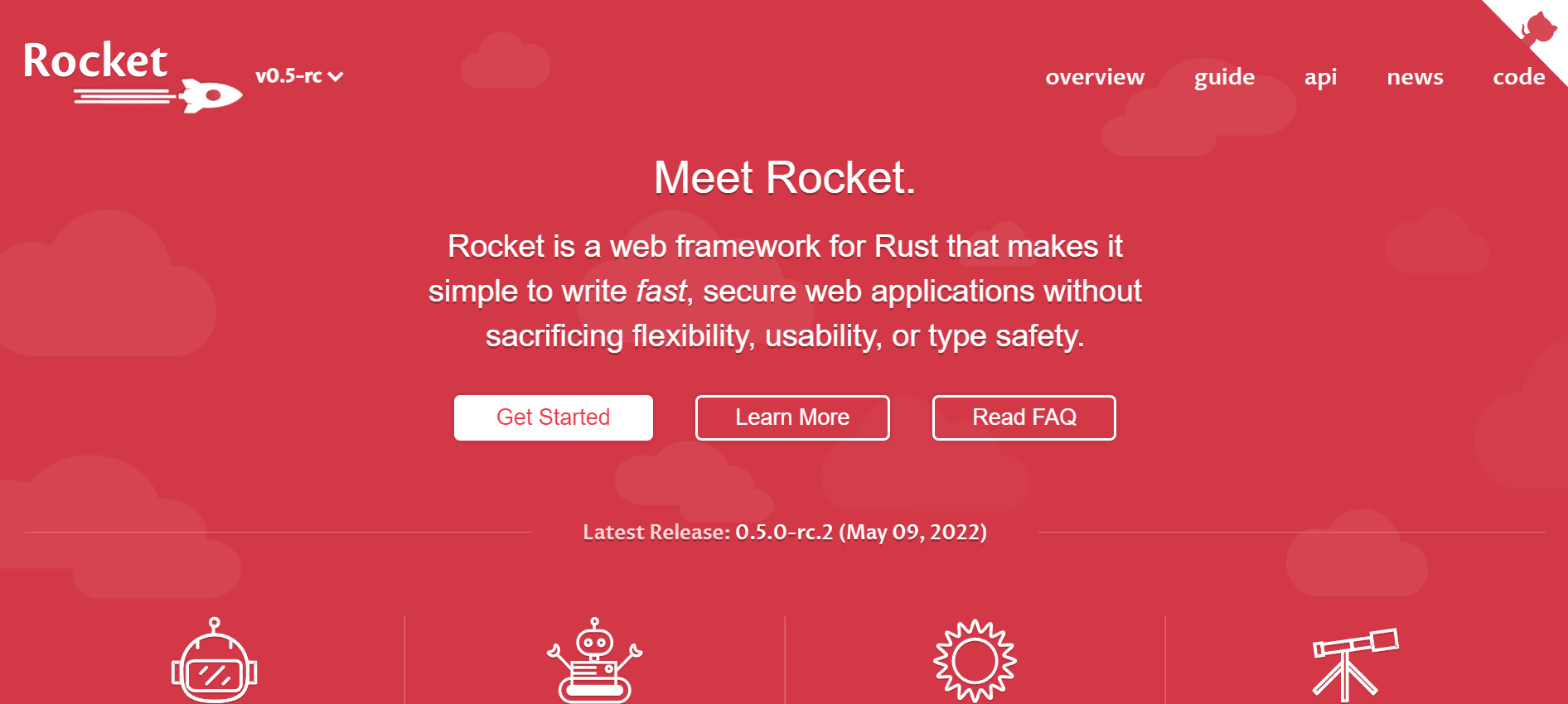
No matter if you are an experienced user of Rustlang or a complete beginner, Rocket is known for being very approachable and universal. It is very adaptable and prioritizes speed; you won't need to spend a lot of time setting up a project before you can begin coding.
Additionally, it claims to be "boilerplate free," which means that all of the code generated by Rocket is generated automatically and you won't waste time writing it. Additionally, it is entirely type-safe, eliminating the chance of potential server issues.
Rocket makes sure that all of the types in a particular handler can be generated from the incoming request whenever you submit a new request.
Rocket is an async web framework for Rust with an emphasis on security, performance, flexibility, and usability.
Features:
- Async streams
- Boilerplate free
- Easy to use
- Extensible
- Testing library
- Type safe
#4 Actix Web
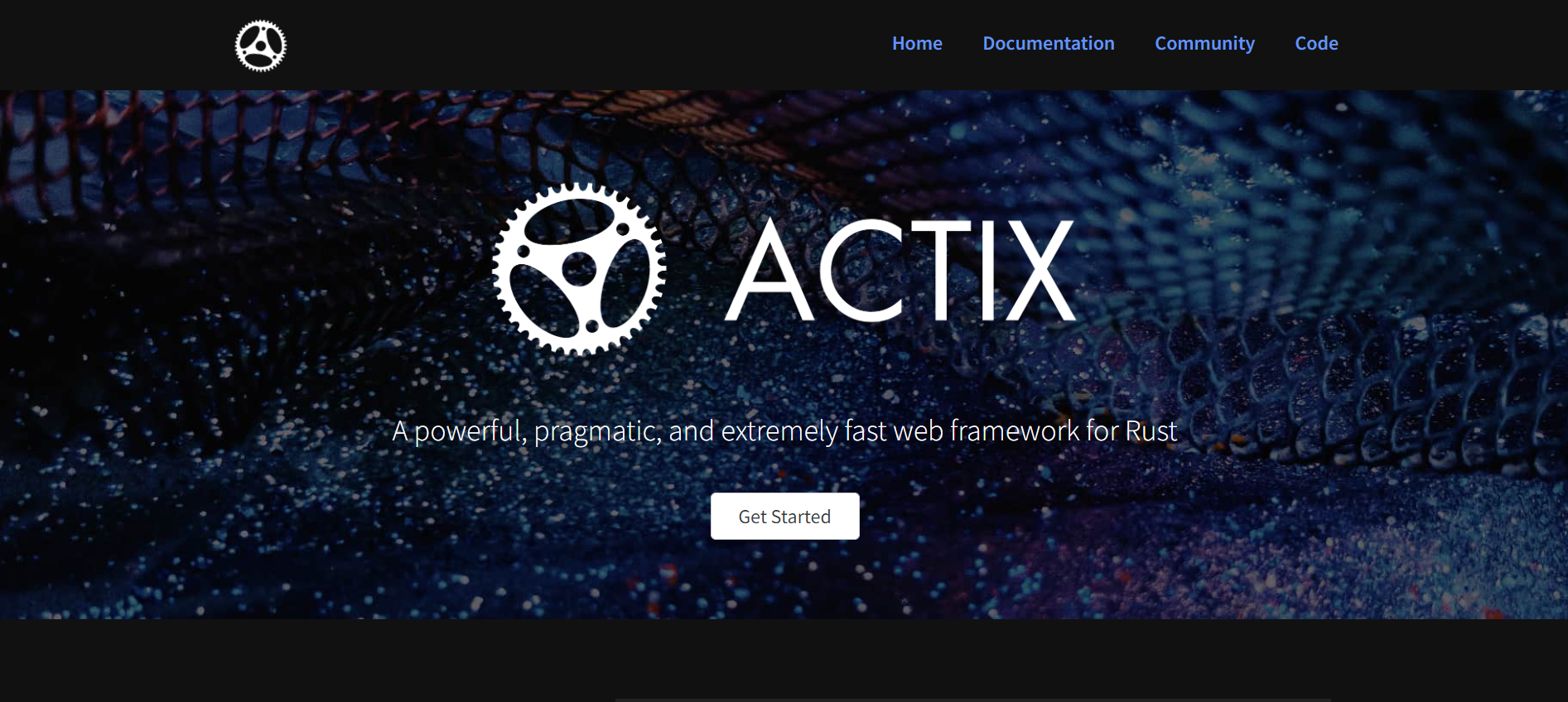
The two most popular options for web development frameworks in Rust are Actix Web and Rocket. Both of them provide type safety in their requests and lightning-fast performance.
Although Rocket uses Rustlang Nightly, a more "experimental" version of Rust that is released before even the Beta versions, Actix web is considered to be more stable because it uses the most recent stable build of the language.
In contrast, it offers fewer capabilities out of the box, so if you want to complete more complicated tasks, you'll generally need to use another framework. Actix is an excellent option, nevertheless, if you're looking for a quick, secure, and simple framework for Rustlang basic web development.
Features:
- Client/server WebSockets support
- Full Tokio compatibility
- Keep alive and slow requests handling
- Middlewares
- Multipart streams
- SSL support using OpenSSL or Rustls
- Static assets
- Streaming and pipelining
- Supports HTTP/1.x and HTTP/2
#5 Juniper

Rust developers can now create type-safe, lightning-fast GraphQL servers with Juniper. Additionally, we make every effort to maximize Rust's convenience for expressing and resolving GraphQL schemas.
Instead of including a web server, Juniper offers building elements that make integrating with pre-existing servers simple. For the Actix, Hyper, Iron, Rocket, and Warp frameworks, it offers an optional pre-built integration that includes inbuilt Graphiql and GraphQL Playground for simple debugging.
Features:
- Agnostic to serialization format and network transport
- Both synchronous and asynchronous execution are supported
- Follows a code-first approach
- Supports the full GraphQL query language
#6 Dioxus
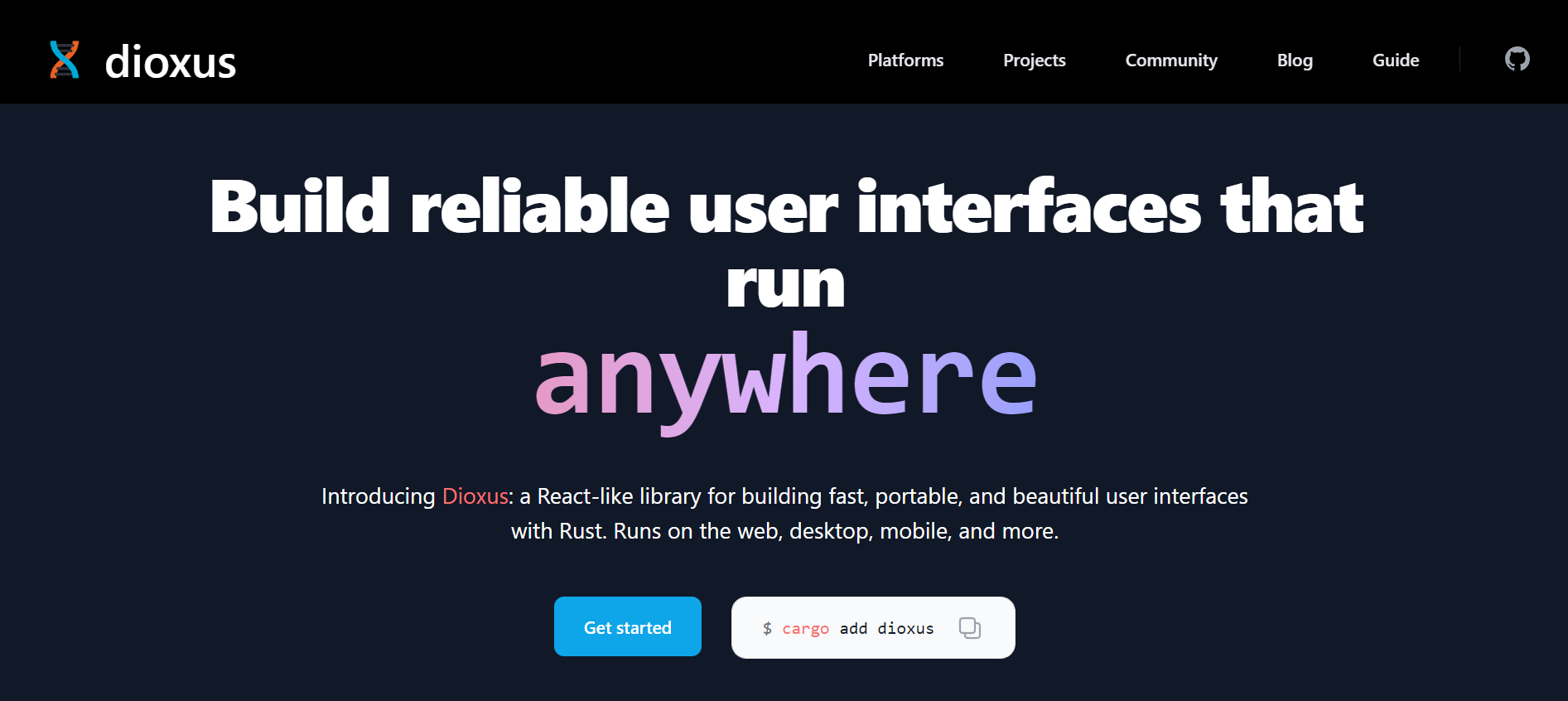
Dioxus is a virtual DOM-based UI framework with a React-like design that supports creating cross-platform apps for web, mobile, and desktop. It supports concurrency and async, props, an integrated error handler, state management, and more. It also supports component-based architecture.
Dioxus is a lightweight, quick, and practical Rust framework for creating cross-platform user interfaces. Webapps, desktop apps, static sites, mobile apps, TUI apps, liveview apps, and other types of apps can all be delivered using Dioxus. Dioxus can be used as a platform for any renderer because it is completely renderer agnostic.
Features:
- Comprehensive inline documentation
- Extremely memory efficient
- Incredibly ergonomic and powerful state management
- Multi-channel asynchronous scheduler
#7 Stdweb
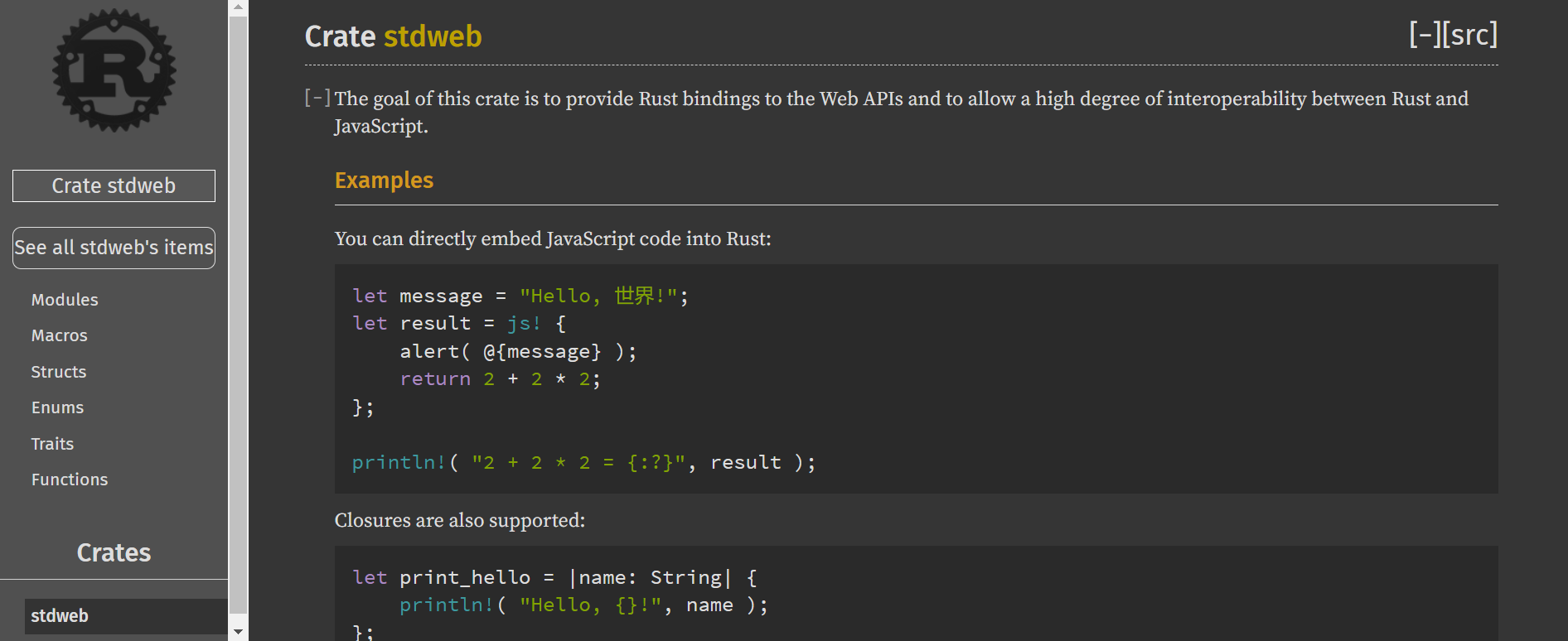
A frontend standard library called stdweb enables Rust to interact directly with JavaScript web APIs. It was designed to enable developers to produce fully functional JavaScript apps in Rust by facilitating simple API binding between the two languages to enhance speed and performance.
Closures, arbitrary structure, and common web API elements like DOM, events, and windows are supported by stdweb.
Features:
- Allow a high degree of interoperability
- Closures are also supported
- Provide Rust bindings to the Web APIs
- Support experimental Parcel plugin
#8 Percy
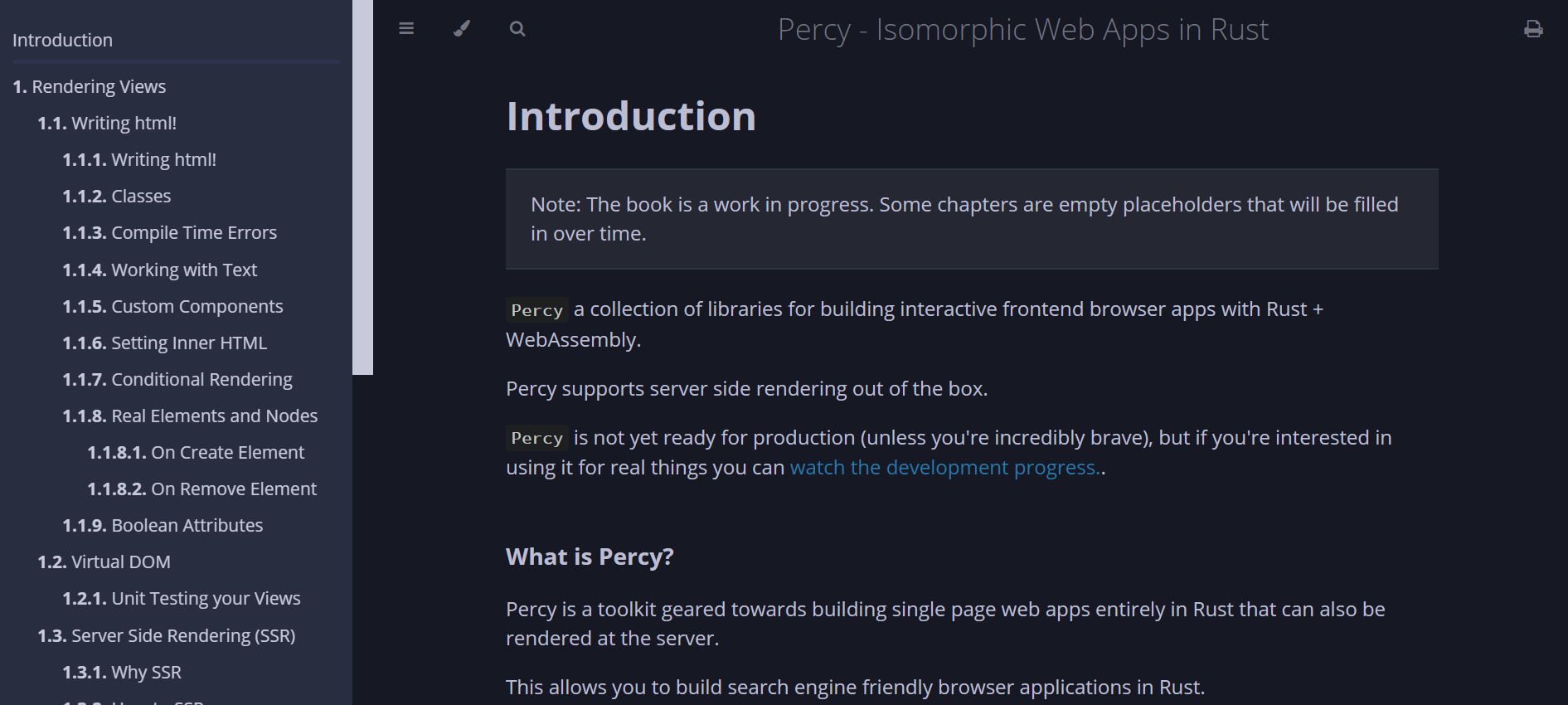
Percy is a collection of Rust libraries used to create frontend web applications that are driven by WebMeeting. Percy assists in triggering server-side rendering. The task excels in creating single-page purposes (SPAs) that are friendly to search engines.
For the creation of digital DOMs, Percy provides an html! macro. These can be used for operations in the utility's backend or rendered as DOM components for the frontend.
You can build apps using Percy that support either server-side rendering only, client-side rendering only, or both server and client-side rendering.
Percy is still relatively young, and even though the library isn't ready for manufacture, the project has over 2,000 stars on Github, suggesting that it may be highly well-liked.
Features:
- Allows building search engine-friendly browser applications
- CSS in Rust
- Supports server-side rendering
#9 Sycamore
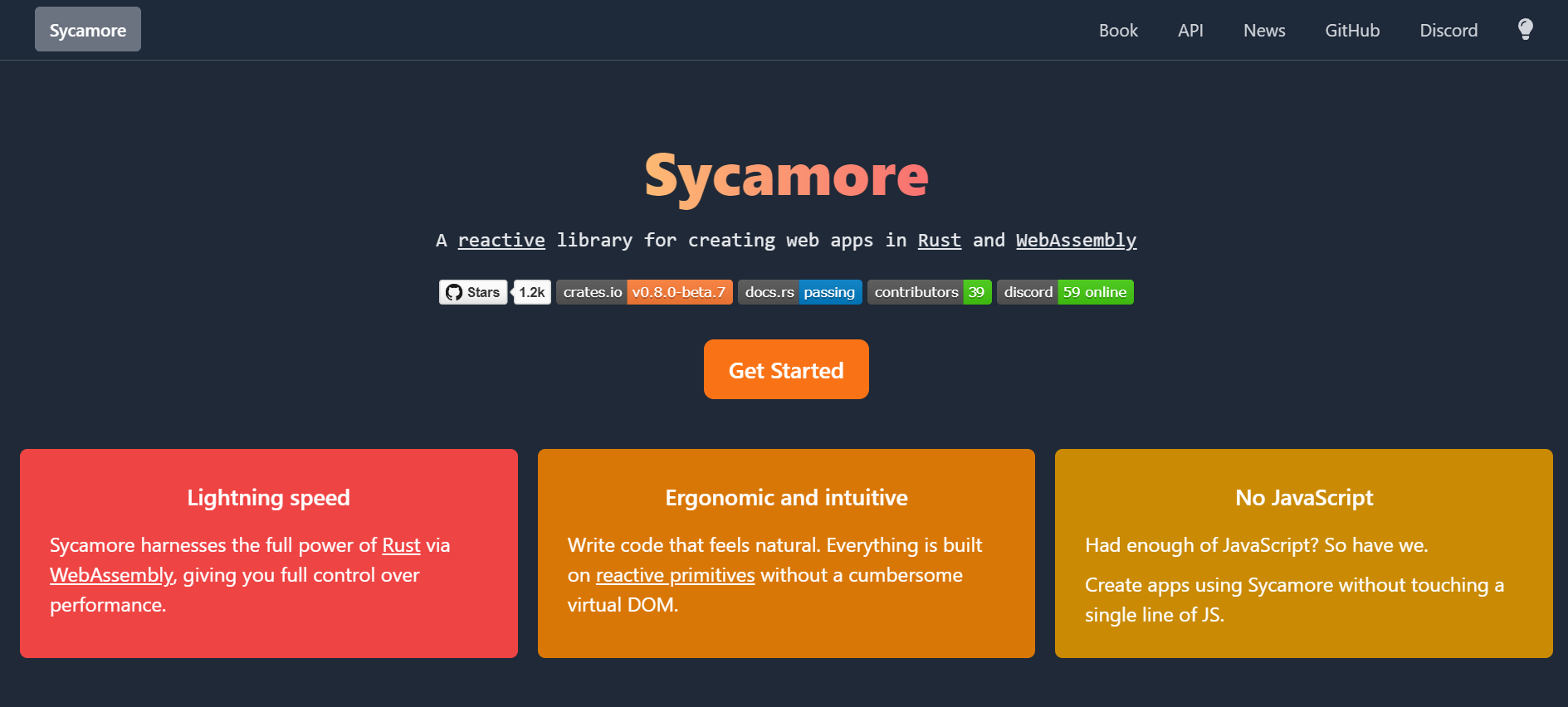
A reactive framework that is similar to SolidJS in speed, ease, and use is named Sycamore. It can be used to build Rust net purposes that make use of WebMeeting's abilities. You won't need to write JavaScript because Sycamore includes many of the Rust functions you'll need to build an online app frontend.
In addition, Sycamore provides Wasm-Bindgen and a router via web-sys or js-sys compatibility for JavaScript. The goal of the task is to fast launch testing and CSS performance.
You will require the most recent version of Rust—the wasm32-unknown-unknown goal—to utilize Sycamore. A trunk is also required to create and package your application.
Since Sycamore is new, it will probably be risky to utilize the main department library in manufacturing, unless you turn to an earlier release.
Features:
- Ergonomic and intuitive
- Excellent documentation
- Lightning speed
- No JavaScript
#10 Gloo
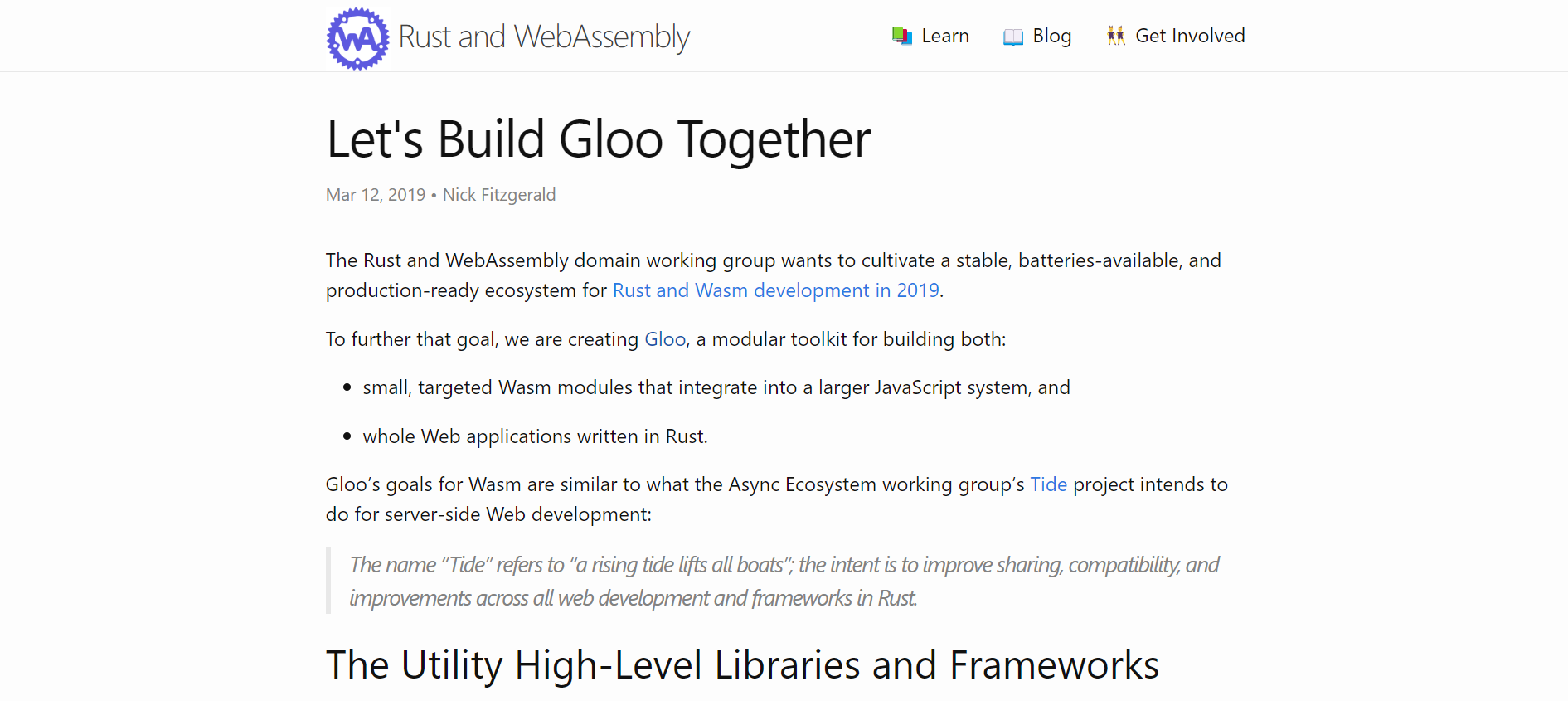
Gloo is a modular toolkit. It is a group of libraries that offer convenient Rust wrappers for browser APIs. Since using web-sys/js-sys directly is very challenging and inconvenient, gloo offers wrappers around the raw bindings to make it simpler to use those APIs.
Because of this, it is referred to as a "toolkit" rather than a "library" or "framework." Gloo ought to be a flexible grouping of utility crates that can be used separately or collectively.
Features:
- Cultivate the Rust and Wasm library ecosystem
- Fast
- Idiomatic
- Modular toolkit
- Reliable
- Small
- Support both small, targeted libraries and Web applications
#11 Seed
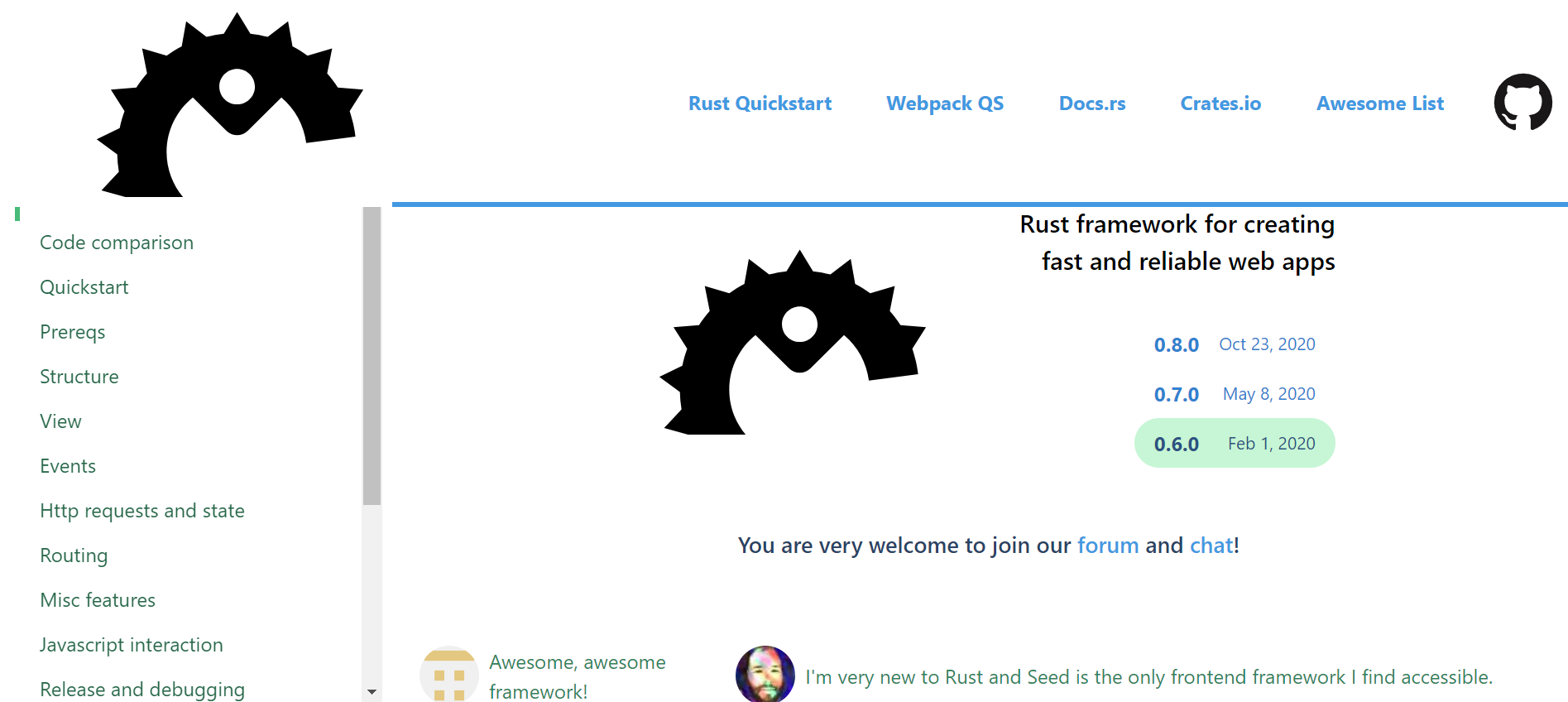
With an Elm-like architecture, Seed is a Rust frontend framework for building quick and dependable web applications. Including the templating system, it is entirely written in Rust.
Elm architecture serves as the foundation for internal state management. Seed provides a batteries-included approach with a focus on developer experience. This saves time on installing dependencies and writing boilerplate.
Rustaceans will feel right at home using the macro syntax of the Seed templating engine. As a result, Rust will be used for all formatting, commenting, and linting. A JSX-like syntax, on the other hand, depends on IDE extensions to enhance the developer experience.
With Seed, you can create the frontend with all of Rust's advantages, including speed, safety, and way too many other things to list. For both experienced users and newcomers to Rust, it offers comprehensive and clear documentation.
Features:
- A batteries-included approach
- Clear and extensive documentation
- Completely written in Rust
- WebAssembly
Conclusion
Rust is a very flexible language, and many different projects include it directly into their design. Additionally, Rustlang has been used for JavaScript compilers like swc, web engines like Servo, and Starship, a customized prompt for a variety of terminals.
Rust can handle whatever you throw at it, so if you were unclear about whether you could use it for whatever project you were considering, you can rest assured that it can.
It's critical to first understand your needs before selecting the ideal web framework for your frontend or backend development project. Depending on your needs, you'll be well on your way to using web frameworks in Rust to increase effectiveness, speed, and productivity.
Monitor Your Entire Application with Atatus
Atatus is a Full Stack Observability Platform that lets you review problems as if they happened in your application. Instead of guessing why errors happen or asking users for screenshots and log dumps, Atatus lets you replay the session to quickly understand what went wrong.
We offer Application Performance Monitoring, Real User Monitoring, Server Monitoring, Logs Monitoring, Synthetic Monitoring, Uptime Monitoring, and API Analytics. It works perfectly with any application, regardless of framework, and has plugins.

Atatus can be beneficial to your business, which provides a comprehensive view of your application, including how it works, where performance bottlenecks exist, which users are most impacted, and which errors break your code for your frontend, backend, and infrastructure.
If you are not yet an Atatus customer, you can sign up for a 14-day free trial.
#1 Solution for Logs, Traces & Metrics
APM
Kubernetes
Logs
Synthetics
RUM
Serverless
Security
More

